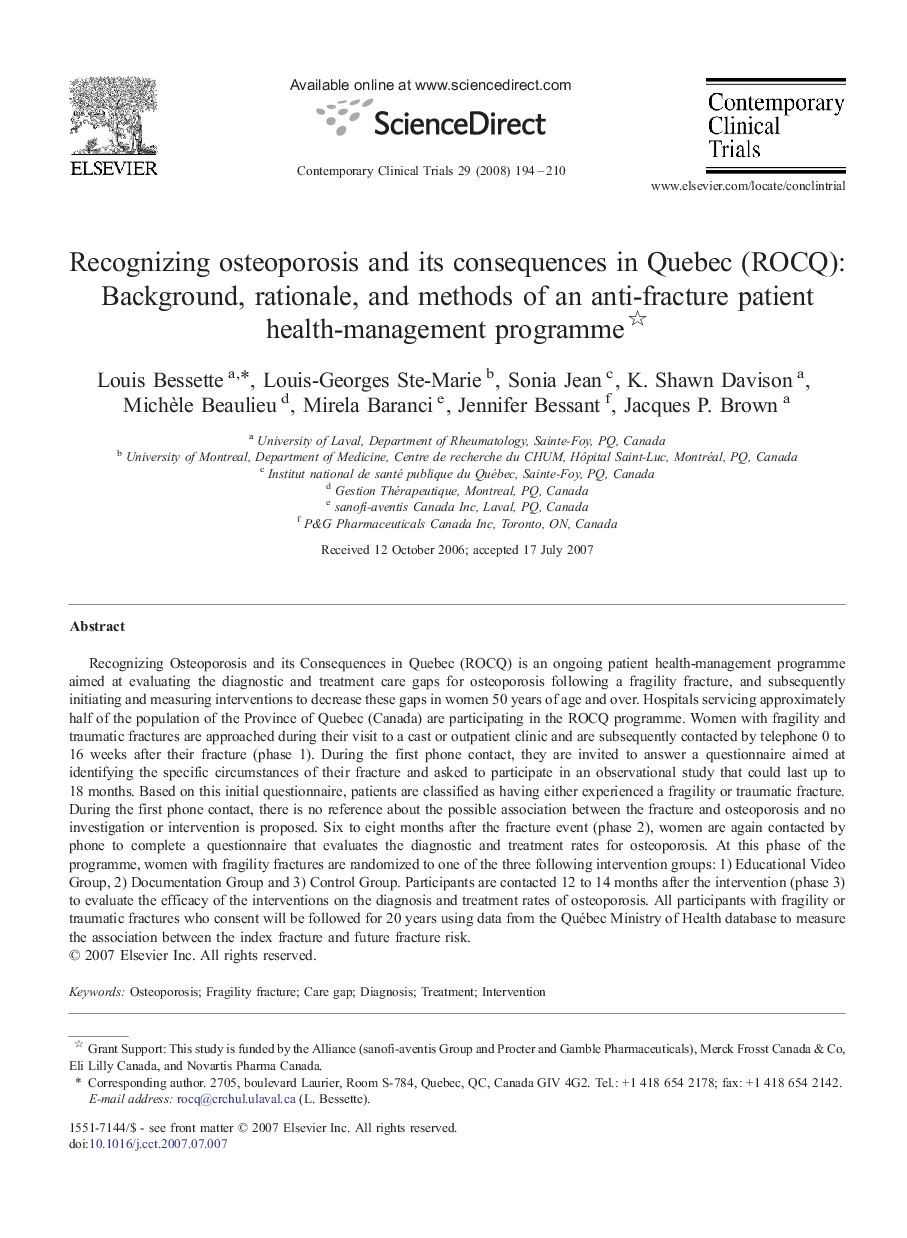| کد مقاله | کد نشریه | سال انتشار | مقاله انگلیسی | نسخه تمام متن |
|---|---|---|---|---|
| 3463403 | 1231554 | 2008 | 17 صفحه PDF | دانلود رایگان |

Recognizing Osteoporosis and its Consequences in Quebec (ROCQ) is an ongoing patient health-management programme aimed at evaluating the diagnostic and treatment care gaps for osteoporosis following a fragility fracture, and subsequently initiating and measuring interventions to decrease these gaps in women 50 years of age and over. Hospitals servicing approximately half of the population of the Province of Quebec (Canada) are participating in the ROCQ programme. Women with fragility and traumatic fractures are approached during their visit to a cast or outpatient clinic and are subsequently contacted by telephone 0 to 16 weeks after their fracture (phase 1). During the first phone contact, they are invited to answer a questionnaire aimed at identifying the specific circumstances of their fracture and asked to participate in an observational study that could last up to 18 months. Based on this initial questionnaire, patients are classified as having either experienced a fragility or traumatic fracture. During the first phone contact, there is no reference about the possible association between the fracture and osteoporosis and no investigation or intervention is proposed. Six to eight months after the fracture event (phase 2), women are again contacted by phone to complete a questionnaire that evaluates the diagnostic and treatment rates for osteoporosis. At this phase of the programme, women with fragility fractures are randomized to one of the three following intervention groups: 1) Educational Video Group, 2) Documentation Group and 3) Control Group. Participants are contacted 12 to 14 months after the intervention (phase 3) to evaluate the efficacy of the interventions on the diagnosis and treatment rates of osteoporosis. All participants with fragility or traumatic fractures who consent will be followed for 20 years using data from the Québec Ministry of Health database to measure the association between the index fracture and future fracture risk.
Journal: Contemporary Clinical Trials - Volume 29, Issue 2, March 2008, Pages 194–210